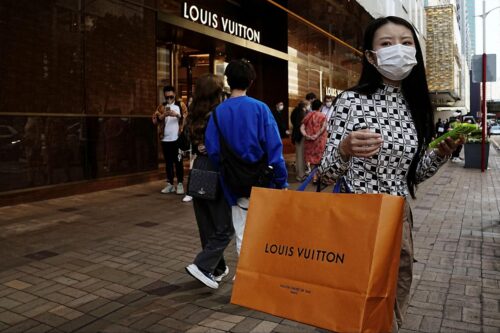Chinese consumers spent big over Spring Festival but can it last?
After three barren years, tourist sites and restaurants were packed over the Chinese New Year holiday. But now that the Year of the Rabbit has begun, consumption-led growth will depend on getting people to part with their savings and live a little.

More than 2 billion people traveled home for this year’s Spring Festival or Lunar New Year (January 21-27). It was the first proper New Year celebration after the abolition of COVID zero, and Chinese consumers began spending money again: scenic spots were crowded, restaurants were full, and the streets and alleys were bustling with traffic.
Over the last few days, Chinese media and government messaging have reported on a substantial Spring Festival rebound in consumption, and so-called “revenge consumption” (报复性消费), which refers to people suddenly spending again after three years of COVID curbs and austerity:
Entertainment, food, and beverages
- Sales of key retail and food and beverage enterprises across the country increased by 6.8% year-on-year.
- Online retailer Meituan says that from January 21-26, the number of orders for dine-in meals across the country increased by 53%.
- The total cinema box office amounted to 6.75 billion yuan ($995.78 million), the second-highest ever after the 7.84 billion yuan ($1.15 billion) of 2021, per Maoyuan Data.
Travel and tourism
- The popular tourist destination Huangshan Mountain had the highest number of single day visitors since 2018.
- Total domestic tourism revenue amounted to 375.84 billion yuan ($55.38 billion), an increase of 30% and equivalent to 73.1% of the level of 2019.
- Alipay, China’s biggest online payments service, reported an 80% increase in hotel expenditure.
- Outbound flight ticket bookings increased by 258%, and inbound bookings increased by 632%. International hotel bookings increased by 177% (TravelGo 同程旅行).
China news, weekly.
Sign up for The China Project’s weekly newsletter, our free roundup of the most important China stories.
Will Chinese consumers keep spending?
Consumption clearly did increase in this year’s Spring Festival, but China’s economic challenge is to get people to save less and spend more in the coming months. The key requirement for this is consumer confidence: if people have the expectation of future income they will reduce their savings and increase consumption and investment.
According to the National Bureau of Statistics, in 2022, the per capita disposable income in China was 36,883 yuan ($5,435), a nominal increase of 5.0% year-on-year and an actual increase of 2.9%, which is basically in line with the national GDP growth rate.
Yet during the three years of the pandemic, much of this disposable income flowed into household savings, which have continued to accumulate: From January to November 2022, household deposits amounted to a record high 14.95 trillion yuan ($2.20 trillion). The prolonged downturn of the real estate sector has weighed further on consumption in various related industries such as home appliances, home decoration, and furniture.
The Chinese government is hoping to instill consumer confidence by means of an active fiscal policy, including increasing access to loan financing for small and medium-sized enterprises (SMEs), handing out consumption vouchers, raising wages, and setting policies to reduce unemployment.
This is an ongoing process: In November 2022, the People’s Bank of China (PBOC) reduced the deposit reserve ratio of financial institutions (the minimum amount that a commercial bank must hold in liquid assets) by 0.25 percentage points, a move that released about 500 billion yuan ($73.68 billion) of funds. In the same month, the PBOC also released 16 financial measures to support financing for the real estate sector.
True consumption-led growth, however, will require much more concerted action as well as consumer buy-in in 2023. It remains to be seen if the government can pull it off.
Appendix: More statistics on Spring Festival spending
- Sales revenue of consumption-related industries across the country increased by 12.2% (State Taxation Administration).
- Consumption in third-tier cities and below increased by nearly 20%, exceeding the growth rate of first- and second-tier cities (Alipay).
- On January 30, the State Council’s Joint Prevention and Control Mechanism reported at a press conference that dine-in catering during the Spring Festival holiday increased by 15.4%.
- A total of 226 million passengers traveled within China, a daily average of 32.23 million, a year-on-year increase of 71.2%.
- A total of 2.8 million people entered and left China, a year-on-year increase of 117.8% (Ministry of Culture and Tourism).






